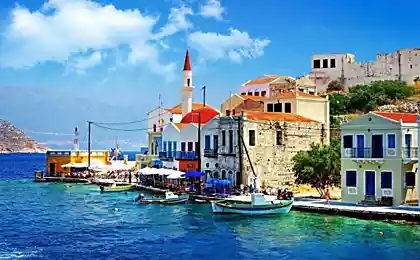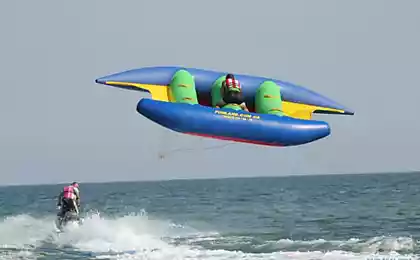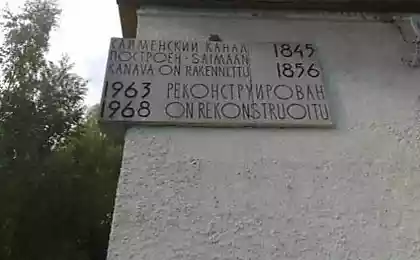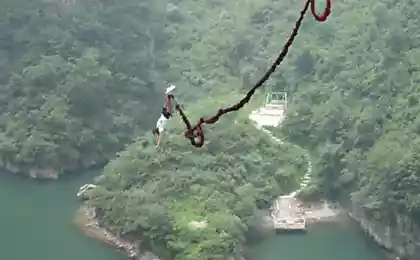2753
Corinth Canal (29 photos)
Corinth Canal - Canal in Greece, which connects the Aegean Saronic Gulf and the Gulf of Corinth Ionian seas. Breaking through the Isthmus of Corinth, which connects the Peloponnese peninsula to the mainland. The name was in honor of the city of Corinth, located at the western end of the channel. Channel length is 6 kilometers, the depth of 8 meters. The walls of the channel of natural origin, mainly of limestone, the walls are up to 76 meters. Channel width at sea level is 25 meters, the seabed and - 21 meters. Through the channel spanned one railway and three road bridges. Additionally, on both sides of the channel function submersible bridges.

Since ancient times, attempts were made to build a canal in that location. The first reference is to the VII century BC. e., when the Corinthian tyrant Periander, is referred to the seven sages of ancient Greece, tried to dig through the waterway, but stopped working. Construction of the Corinth Canal was conducted over ten years (1881-1893) by two and a half thousand workers who have used the best at the time of the machine. August 7, 1893 was arranged a celebration on the occasion of the opening of the Corinth Canal.

Currently, the channel is partly lost economic value. Because of the narrowness of the waterway in it is organized reverse movement. The channel can not be held large ocean-going vessels, the width of which is close to 20 meters. Large vessels pass channel in tow, as there is a risk of erosion of the walls. In the year through the channel are 11,000 vessels. Bridges channel practiced Bungee jumping.

Before the canal was built, the Mariners have to travel the extra 185 nautical miles while sailing between the Aegean Sea and the Adriatic. First spoke about the need of such a channel has Periander, tyrant of Corinth in 602 BC. But such a large-scale project was above the technical abilities of those times, because Periander implemented another project when the ships for a special way to the stone rolled the wheel platforms from one sea to another
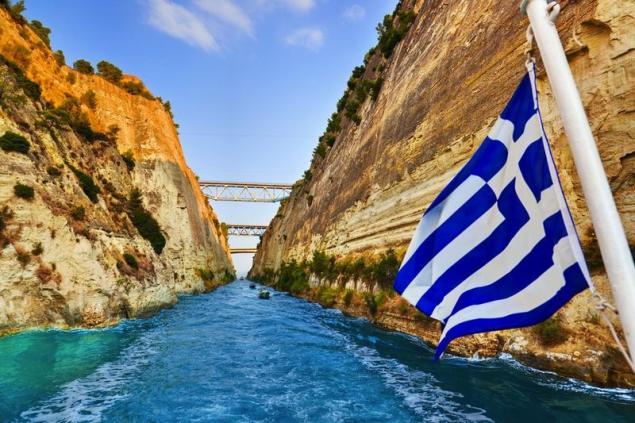
Also tried to implement this idea Dimitrios Paleokritis in 300 BC. But then his engineers insisted that the project can not be realized because the North Adriatic on the mistaken belief ancient specialists is above the Aegean Sea and it could flood. At the time, so it is believed that Poseidon, god of the sea, was against the merger of the two seas.
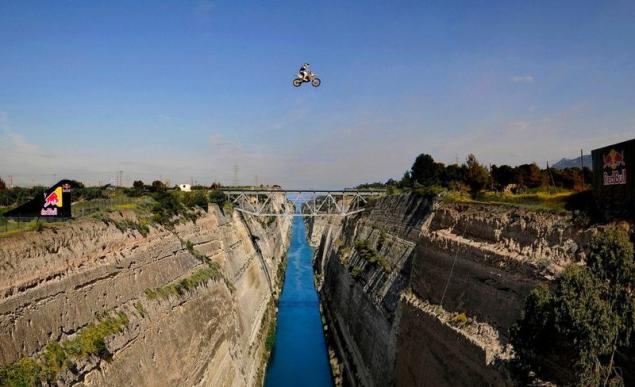
The same concerns prevented build a canal and Julius Caesar, and several subsequent emperors. The most serious attempt was made by the Emperor Nero in 67 AD. In his possession were 6,000 slaves, and the emperor himself was the first to set to work, hollowing rock gold pick. Unfortunately, he was killed long before the work was finished

In modern times took the project seriously Governor Kapodistrias in 1830, the first governor of Greece after the liberation from the Turks Ottomaknskih. But the budget was estimated at 40 million French francs, which was unaffordable sum for the Greek state. Finally, in 1869, Parliament authorized the government to provide the desired amount and initiate a campaign for the construction of the Corinth Canal. Work commenced March 29, 1882, but a sum of 30 million francs was not enough. Work stopped, and were re-started only in 1890. The canal was ready October 28, 1893

Because of the narrowness of the channel, navigation problems, and frequent landslides, are never so plainly not been established movement of ships. Today, the channel is mainly used as an attraction for tourists. Well, the bridge over the channel chosen by BASE jumpers who commit their jumps here









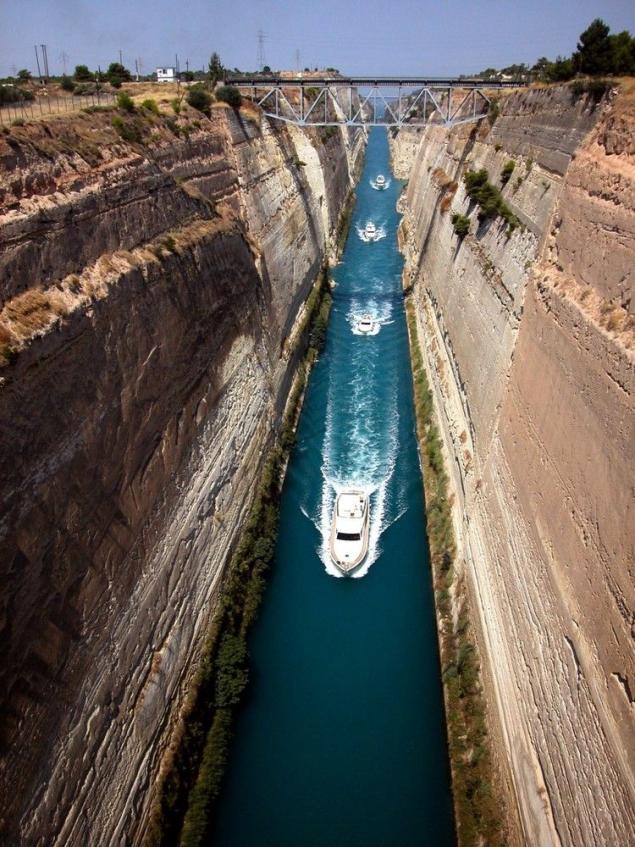







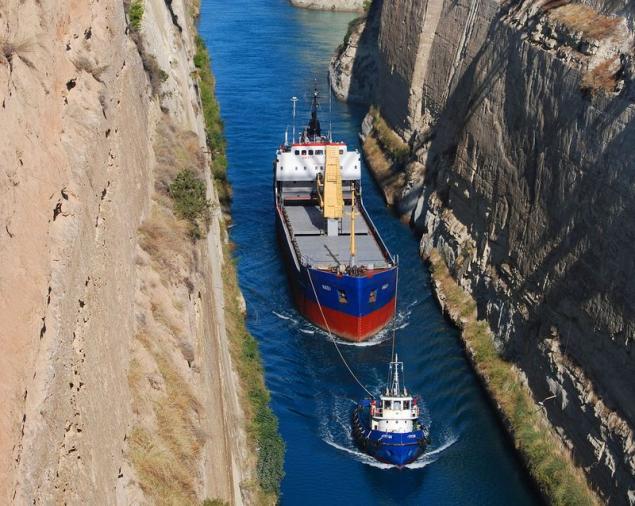




Source: e-board.livejournal.com

Since ancient times, attempts were made to build a canal in that location. The first reference is to the VII century BC. e., when the Corinthian tyrant Periander, is referred to the seven sages of ancient Greece, tried to dig through the waterway, but stopped working. Construction of the Corinth Canal was conducted over ten years (1881-1893) by two and a half thousand workers who have used the best at the time of the machine. August 7, 1893 was arranged a celebration on the occasion of the opening of the Corinth Canal.

Currently, the channel is partly lost economic value. Because of the narrowness of the waterway in it is organized reverse movement. The channel can not be held large ocean-going vessels, the width of which is close to 20 meters. Large vessels pass channel in tow, as there is a risk of erosion of the walls. In the year through the channel are 11,000 vessels. Bridges channel practiced Bungee jumping.

Before the canal was built, the Mariners have to travel the extra 185 nautical miles while sailing between the Aegean Sea and the Adriatic. First spoke about the need of such a channel has Periander, tyrant of Corinth in 602 BC. But such a large-scale project was above the technical abilities of those times, because Periander implemented another project when the ships for a special way to the stone rolled the wheel platforms from one sea to another

Also tried to implement this idea Dimitrios Paleokritis in 300 BC. But then his engineers insisted that the project can not be realized because the North Adriatic on the mistaken belief ancient specialists is above the Aegean Sea and it could flood. At the time, so it is believed that Poseidon, god of the sea, was against the merger of the two seas.

The same concerns prevented build a canal and Julius Caesar, and several subsequent emperors. The most serious attempt was made by the Emperor Nero in 67 AD. In his possession were 6,000 slaves, and the emperor himself was the first to set to work, hollowing rock gold pick. Unfortunately, he was killed long before the work was finished

In modern times took the project seriously Governor Kapodistrias in 1830, the first governor of Greece after the liberation from the Turks Ottomaknskih. But the budget was estimated at 40 million French francs, which was unaffordable sum for the Greek state. Finally, in 1869, Parliament authorized the government to provide the desired amount and initiate a campaign for the construction of the Corinth Canal. Work commenced March 29, 1882, but a sum of 30 million francs was not enough. Work stopped, and were re-started only in 1890. The canal was ready October 28, 1893

Because of the narrowness of the channel, navigation problems, and frequent landslides, are never so plainly not been established movement of ships. Today, the channel is mainly used as an attraction for tourists. Well, the bridge over the channel chosen by BASE jumpers who commit their jumps here






















Source: e-board.livejournal.com






